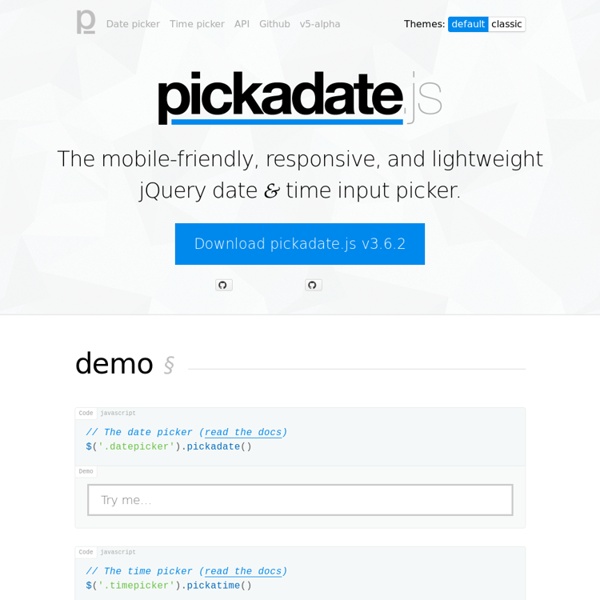



Introduction à jQuery Pour tirer le maximum du jQuery, nous devrions revoir comment est construite une page HTML. Un document HTML est structuré en suivant le Document Object Model, ou DOM. C'est par l'interaction avec le DOM que jQuery est capable d'accéder au HTML et de le modifier. Le DOM est constitué de chaque élément sur la page, conçu hiérarchiquement en reflétant la manière dont le document HTML est ordonné. Si les concepts d'élément HTML, de sélecteur CSS, d'ID ou de classe sont encore flous pour vous, n'hésitez pas à les revoir dans le cours sur le HTML et les CSS. jQuery Fundamentals :: jQuery Basics The jQuery library makes it easy to manipulate a page of HTML after it's displayed by the browser. It also provides tools that help you listen for a user to interact with your page, tools that help you create animations in your page, and tools that let you communicate with a server without reloading the page. We'll get to those in a bit. First, let's look at some jQuery basics, and at how we can use jQuery to perform its core functionality: getting some elements and doing something with them. This guide assumes that you understand HTML and CSS Selectors. If you are not familiar with how you can use CSS selectors to target elements, you should spend some time getting up to speed before trying to work through this guide. What’s $, anyway? The jQuery library provides the jQuery function, which lets you select elements using CSS selectors. Of course, if you've seen any jQuery code, you're probably more accustomed to seeing something like this: $(document).ready() Get some elements Chaining
Manipulation | jQuery API Documentation Adds the specified class(es) to each element in the set of matched elements. Insert content, specified by the parameter, after each element in the set of matched elements. Insert content, specified by the parameter, to the end of each element in the set of matched elements. Insert every element in the set of matched elements to the end of the target. Get the value of an attribute for the first element in the set of matched elements or set one or more attributes for every matched element. Insert content, specified by the parameter, before each element in the set of matched elements. Create a deep copy of the set of matched elements. Get the value of a computed style property for the first element in the set of matched elements or set one or more CSS properties for every matched element. Remove the set of matched elements from the DOM. Remove all child nodes of the set of matched elements from the DOM. Determine whether any of the matched elements are assigned the given class.